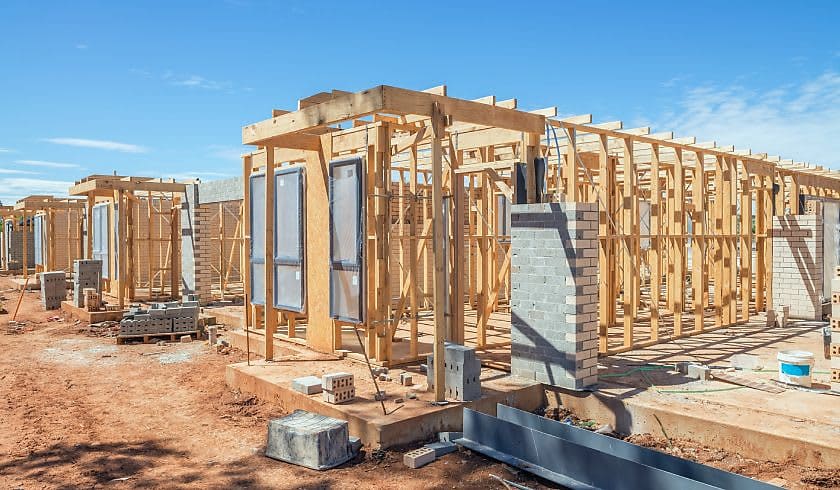Experts warn HAFF deal no silver bullet for supply crisis
Anthony Albanese’s Labor Party struck a deal with the Greens to bring an end to the housing policy stalemate that threatened a return to the polls, with the move welcomed by many industry heavyweights.

In June, both the Coalition and the federal Greens kicked the vote on a host of housing legislation, including the Housing Australia Future Fund (HAFF), until October, a decision born in part due to the Greens’ insistence of action on rent freezes.
The delayed vote, which risked sending Australians back to the polls, will now go ahead after the Albanese government gained the Greens’ support for the housing bill package following the announcement of an extra $1 billion to spend on public and community housing that will be distributed through the National Housing Finance and Investment Corporation (NHFIC).
With the bill set to pass the Senate this week, Prime Minister Anthony Albanese said the $10 billion Housing Australia Future Fund will “create a secure, ongoing pipeline of funding for social and affordable rental housing, fulfilling the commitment the government made to the Australian people”.
The fund will assist in delivering the government’s commitment of 30,000 new social and affordable rental homes in the fund’s first five years, with 4,000 of these dwellings set aside for women and children impacted by family and domestic violence or older women at risk of homelessness.
HAFF returns will also deliver the government’s other housing commitments, including:
- $200 million for the repair, maintenance and improvement of housing in remote Indigenous communities
- $100 million for crisis and transitional housing options for women and children impacted by family and domestic violence and older women at risk of homelessness
- $30 million to build housing for veterans who are experiencing homelessness or at-risk of homelessness
Beyond these material benefits for Australia’s housing stock, Leanne Pilkington, deputy president of the Real Estate Institute of Australia (REIA), opined that the HAFF deal will have a positive impact on all members of the Australian housing ecosystem.
“The REIA has long argued that to fix pressures on the private rental system, it is critical to fix supply of social and affordable housing,” she said.
“We welcome the news that the government has secured the numbers in the upper house to make this fund a reality and get more of this accommodation built,” Ms Pilkington said.
Her sentiments were shared by Michael Zorbas, Property Council of Australia chief executive, who proclaimed: “This is welcome news for new social housing and housing supply in general.”
In his eyes, a “wealthy, rich nation like Australia should not have a housing deficit”, such as the shortfall of over 100,000 homes over the next five years predicted by the NHFIC in April, with this week’s news of the stalemate’s conclusion meaning “Australia now has a better chance of achieving our ambitious national target of 1.2 million homes by 2029”.
But while the welcoming reception of Labor and the Greens’ agreement was widespread, it wasn’t all encompassing. Jocelyn Martin, managing director at the Housing Industry Association (HIA) declared it’s a relief that the “important enabling legislation has passed through Parliament”, but warned its output might not be enough to match demand.
“It’s important to recognise that the commitment to supply 30,000 social and affordable homes via the Housing Australia Future Fund represents only 2.5 per cent of this aspirational target,” she explained, referring to the updated home building targets.
This shortfall means the “private sector will still have to do most of the heavy lifting in terms of meeting Australia’s housing needs, and it is being constrained by policy that inflates the costs of home construction and finance,” she said.
In Ms Martin’s view: “Broader reforms are required to reduce these costs and aid the private sector in enabling the delivery of these targets.”
HIA is advocating for further reforms that include:
- Updating planning systems to facilitate more higher density residential development in existing suburbs near jobs and transport
- The release of greenfield land and provision of infrastructure needs to be expedited
- An end to “punitive” taxes on both investors and owner-occupiers, seeing them replaced with fairer and broader sources of revenue
- Financial regulations to make it easier for banks to lend and potential home buyers to borrow
Ms Martin opined that the absence of these additional reforms will limit the HAFF’s capacity to ease the nation’s property ailments.
“Without these broader reforms, the pressure on social and affordable housing will only increase, and the government’s latest announcement will prove inadequate,” Ms Martin said.
Her sentiments were shared by Master Builders Australia chief executive officer, Denita Wawn, who stated that there is still a “handbrake on housing supply” unless governments make it easier for new projects to get the green light by “kickstarting private investment and reducing development costs and delays”.
“To improve housing affordability across the market, all levels of government must continue to work together to implement continuous land supply through rezoning and planning, and taxes on the development and buying process should be reduced,” Ms Wawn concluded.
